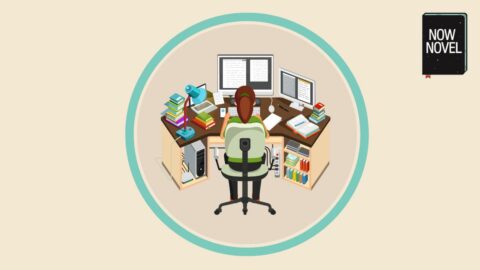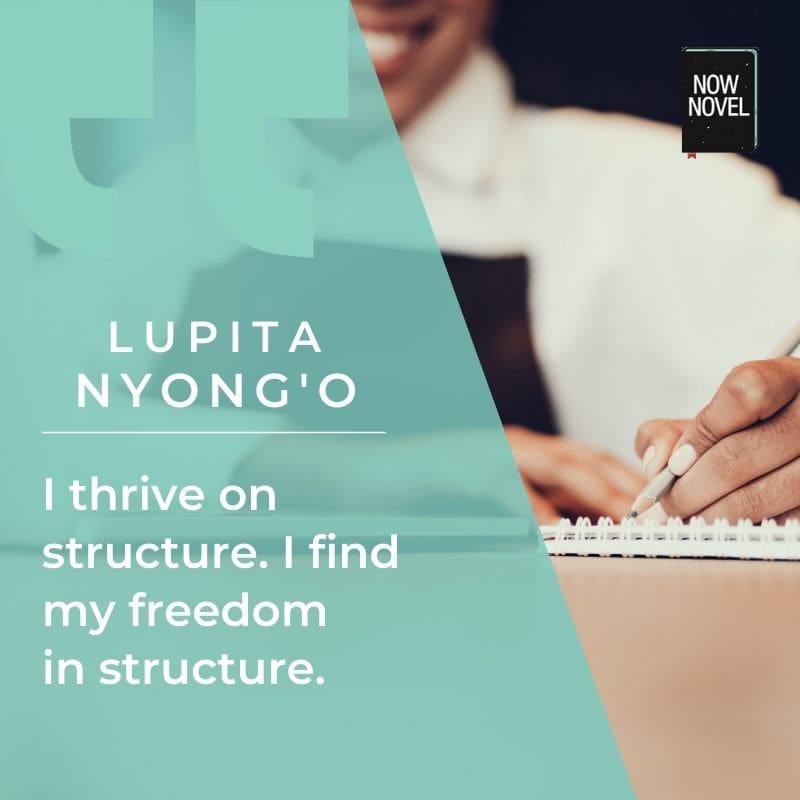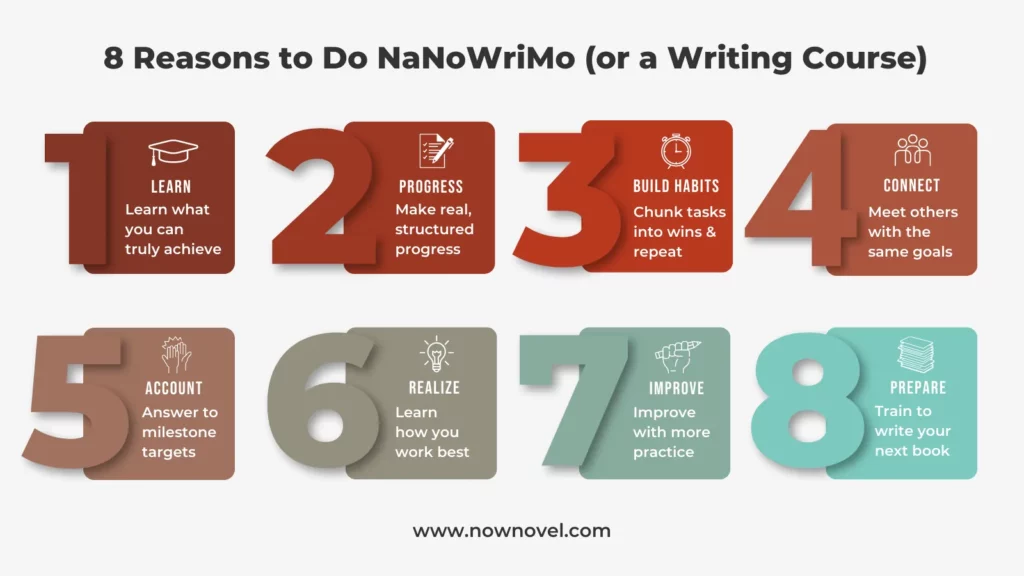What is NaNoWriMo? Why take part? What are the rules? Learn about this annual write-a-thon and why writing a book in a month (or making a good start) is worth doing in November:
What is NaNoWriMo?
National Novel Writing Month (or NaNoWriMo for short) is an annual write-a-thon that takes place in November each year.
During the event, writers around the world attempt to write 50, 000 words of fiction between the 1st and 30th of November. This may form the first rough draft of a manuscript, or process work towards a draft.
Founded by writer Chris Baty ‘accidentally’ in 1999, NaNoWriMo is 501(c)(3) nonprofit organization. Annual participants have grown from 21 in its first year to 427,653 writers participating in 2021. The writing organization’s ethos is:
… to help people find their voices, achieve creative goals, and build new worlds — on and off the page.
NaNoWriMo.org
8 reasons to do NaNoWrimo and other writing bootcamps:
- Learn what you can achieve
- Make actual writing progress
- Build a writing habit worth keeping
- Nurture connections with other writers
- Stay accountable with targets
- Gain perspective on writing process
- Improve your story craft with practice
- Prepare for writing your next book
Learn more about NaNoWrimo’s rules, plus reasons to try and reach 1667 words a day (or whatever you can manage to write realistically!):
What are NaNoWriMo’s rules?
Heather Dudley supplied rules in the official NaNoWriMo forum which are (as of May 2019):
– Write a 50,000-word (or longer!) novel, between November 1 and November 30. Traditionally, this had to be [work] on a new novel; now, we allow you to continue existing works.
Heather Dudley, ‘Welcome to Rules & Regs! What ARE the rules, anyway?’, NaNoWriMo forum.
– Only count words written during November. None of your own previously written prose can be included in your NaNoWriMo draft (though outlines, character sketches, and research are all fine, as are citations from other people’s works).
– Write a novel. We define a novel as a lengthy work of fiction. If you consider the book you’re writing a novel, we consider it a novel too!
– Be the sole author of your novel. Apart from those citations mentioned two bullet-points up.
– Write more than one word repeated 50,000 times.
So whether you kickstart a novel from scratch or refine and extend first chapters, the main thing is to write 50,000 words in one month. This equates to a doable average of 1667 words per day.
What are the benefits of doing NaNoWriMo?
Some authors are on the fence about NaNoWriMo.
Shaunta Grimes, for example, in a popular Medium article titled ‘Why I Don’t NaNoWriMo Anymore’ advocates slowing things down if you want to build a sustainable writing career.
Grimes says something very true about the payoff of gradual (versus instant) gratification:
It’s like this shining beacon that promises all of the good stuff now. But here’s something that I guess someone ought to tell you: You might finish your first draft this November, but it takes a lot longer than that to produce a work of fiction that’s fit for public consumption.
Shaunta Grimes, ‘Why I Don’t NaNoWriMo Anymore’, Medium, May 22 2019.
In fact, it took me longer to make that first book readable because I rushed it out.
A counter to this is you can view NaNoWriMo as a step in what is ultimately your process. Grimes acknowledges exactly this when she says:
Doing it was magical for me, because once I knew I could write a novel, I knew I could learn to write one well.
So what are some of the benefits of doing a writing challenge like NaNoWriMo, or your own, edited version that strikes a balance between just getting the story down on paper and taking your time?
Learn what you can achieve
Even though Grimes stopped doing NaNoWriMo every year for the reasons she mentions, she touched on an important point: Creative process has valuable stepping stones or milestones.
These stepping stones may be collaborative processes such as working with a book writing coach, or doing a writing bootcamp.
They may be tackling writing challenges that arise in your first NaNoWriMo and finding creative solutions in discussion with other writers.
Whatever you use NaNoWriMo for (making progress on a work already underway or starting a new, serious project or a fun one ‘just for kicks’), you’re bound to learn something along the way by dedicating as much time as you can to writing in one month.
Make a Strong Start to your Book
Join Kickstart your Novel and get professional feedback on your first three chapters and story synopsis, plus workbooks and videos.
Learn More
If 1667 words per day aren’t feasible, though, adjust your writing goals. Taking part and committing to your story are already wins.
Make actual writing progress
The NaNoWriMo rules aside, you don’t necessarily have to write 50,000 words in November alone.
As Grimes says in her Medium piece, writing is hard and writing meaningful, polished scenes with clear, communicative style and playful verve takes time.
Yet as Julia Cameron says in The Artist’s Way for Parents, structure helps creativity to flourish:
In limits, there is freedom. Creativity thrives within structure.
Julia Cameron, The Artist’s Way for Parents: Raising Creative Children (2013)
Having a structured writing process, whether it’s a 30-day plan to write a novel (or something slower and gentler like a six-week plan) is useful. It creates space to check in with your own progress and objectives. Structure helps us keep putting one word after another, freely.
Build a writing habit worth keeping
Will fiction you write during NaNoWriMo be publishable?
If you’re racing to meet targets, maybe not the first draft (though first drafts rarely are).
In a Now Novel Q&A on story planning, writing coach Hedi Lampert spoke about how there are at least three drafts worth doing for a story. A ‘down draft’ for getting your ideas down, an ‘up draft’ for picking up on nuance and anything big you missed, and a ‘dental draft’ for polishing your language. This idea Hedi credited to the late author and writing educator Anne Schuster.
To be able to complete even one of these drafts, though, it so helps to build a writing habit that consists of sitting down and getting words on the page regularly.
Try writing morning pages daily to start each day of the writing challenge with a creative kick.
Once you have that, you don’t need NaNoWriMo rules or targets to kick into gear.
Nurture connections with other writers
There are benefits to doing NaNoWriMo or a writing bootcamp or course beyond how many words you produce.
A major benefit is connecting with other writers. Holding one another accountable and sharing advice and insights is motivating in itself.
The value of community comes up often in our own reviews as a motivating factor in being a Now Novel member:
I like the site because the age range of members is wide and reading and critiquing other people’s work really helps with my own writing. Critiques from other members often make me think about something from a different angle.
Now Novel member Christine, testimonial via TrustSpot
Whether you engage on NaNoWriMo’s official forums or join another free-to-participate NaNoWriMo group like our own, good connections make writing more fun. You might even build incredible friendships along the way.
Stay accountable with targets
Accountability is a common struggle for writers because self-discipline is tough. The instant gratification we get from entertainment such as reading a thriller, watching TV, or scrolling through social media idly is much easier than writing often.
This is why a program like NaNoWriMo is useful as with the additional word count targets you set yourself to reach 50,000 words, you’re not writing in the dark. Clear, SMART writing goals help, too.
Writing sprints are also a great way to maintain accountability, so buddy up and write in silence, together.
Gain perspective on writing process
Doing NaNoWriMo gives you something that money can’t buy because it is experiential: perspective.
Once you know how hard (or, if you are lucky, how easy) writing a novel is, you may find you are kinder to yourself about ‘slow’ writing days where 500 words (or fewer) feel like no progress at all.
Perspective is essential to creative process because without it, it’s easy to get discouraged.
Improve your story craft with practice
When you commit to writing 50,000 words in a month, it’s inevitable you’ll learn a lot about story craft.
Challenges will come up. Joining NaNoWriMo-oriented forums where you can ask questions provides many opportunities to learn from other writers at a similar stage to yourself.
The NaNoWriMo organization runs many story craft events.
Here at Now Novel we have short courses, workbooks and free email-based writing tutorials that will help you answer questions that arise as the month hurtles past.
Prepare for writing your next book
The important part of a write-a-thon or writing bootcamp is to have fun. Pick a project you’ve always wanted to write, or practice a genre you’ve never tried before.
However you choose to use it, writing in focused sprints for a month will only improve your craft. In the end, you’ll have put in the practice and preparation to make your next story your strongest yet.
Are you doing NaNoWriMo this year?
Comment below and tell us why you are (if yes) or why you’re not (if no).
Join Kickstart your Novel for a more structured approach. Have fun in a six-week program to write your first three chapters and story plan. Get professional feedback, workbooks and videos, and story outlining tools to structure your ideas.




10 replies on “What is NaNoWriMo? Rules and reasons to do it”
I heard about NaNoWriMo in 2008. What a kick to talk, for the first time, with another writer. Somehow I found the website in 2010 and began. I’ve been in every NaNo, a Script Frenzy (HARD), and several Camp NaNo’s where the rules are relaxed. I have usually won, usually contributed to Office of Letters and Light, and usually despair of getting even an idea.
The first one in 2010 was my best. I took one of my secondary characters and took off with it. I think it worked okay, filling in some of the holes in the back story of my ‘art therapy’ I unknowingly had been writing for over 20 years.
Anyone can do it. We have all done writing. If nothing else, write about a part of your life with names changed to protect the innocent. No one will read it unless you want someone too. It can be any kind of quality. Kick your critical self (inner editor) out the door when you sit down to write. (Easier said than done.)
But – Just – Write!
Hi njn, that’s commitment! Thanks for sharing your experience and tips.
Is there formatting rules, like those required for manuscripts?
Hi David, thank you for your question. Do you mean for NaNoWriMo? None other than the usual way one would format a manuscript (many publishers provide guidelines on their submissions pages that are a useful starting point for deciding things such as font size and spacing). Penguin Random House say, for example:
I hope this answers your question! Thanks for reading our blog.
After reading the above intro and all the links on the side of the page, I still do not know how to join NaNoWriMo for this coming month. Is there a fee? Is there a place to sign up? Thanks.
Hi Ghosha, thank you for the feedback! I will update this article accordingly so that it’s clearer. There is no fee to join NaNoWriMo and you may sign up via NaNoWriMo’s website at nanowrimo.org.
If you’re planning to do NaNo, you can also join our dedicated group for NaNoWriMo 2022 in Now Novel Groups, our chat forums and critique community which is free to join. Once signed in, you’ll find the group here.
Hi I’ve joined NanoWriMo2022 but am not sure how to start. Do I just type in a Word document or is there a template in which I write every day and which will automatically do a word count to chart progress?
Hi Indrani! Thanks for joining. You just type in a Word document (or Google Docs or your word processor of choice). I would suggest keeping a separate document or spreadsheet to record your word counts each day, what you enjoyed and what was challenging. That way you can monitor your progress, and keep a record of what went well and what you’d like to work on in your writing and story craft moving ahead. Word has the convenience of an inbuilt word count.
If you’re planning on sharing segments for feedback from the Now Novel community, the Writing Pad on the site tells you your word count and you can also export segments of your story to PDF and view character and plot outlining you’ve done in a sidebar as you write.
Due to constraints, is this a course in writing, fee? Editing? Thank you.
Hi Smith, thank you for reaching out. NaNoWriMo is an annual challenge to write a draft book of 50,000 words in the month of November. There is no fee to join and participate. If you’re looking for courses, we offer courses and guides with a range of fees (from free to six-month courses with coach feedback, workbooks and sprints). You can learn more here. If you’re interested in editing, you can get a no-obligation quote via our editing services page. I hope this is helpful.